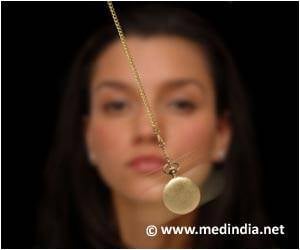Healthy aging and exceptional longevity tends to run in families and people married or born into such long-lived families are at lower risk of diabetes.
- People married or born into long-lived families are at lower risk of diabetes
- Healthy aging and exceptional longevity tends to run in families
- Genetic differences also play a major role in one's lifespan and good health
But as average life expectancy continues to increase worldwide due to overall improvements in these and other factors, it’s becoming clear that exceptional longevity and healthy aging tends to run in families. This suggests that genetic differences also play a role in assuring lifespan and life-long good health.
Prof Iva Miljkovic from the School of Public Health at the University of Pittsburgh, US, said: “In a new study, we show that the children of exceptionally long-lived parents, as well as their spouses, have a similar reduced risk for developing type II diabetes compared to the general population.”
Exceptionally Long-Lived Families
The study, published in Frontiers in Clinical Diabetes and Healthcare, is part of the Long Life Family Study (LLFS) of the US National Institute on Aging-National Institutes of Health (NIA-NIH).The LLFS focuses on families in the US and Denmark with multiple exceptionally long-lived members. It identifies, across two generations, which genetic, epigenetic, and other biological processes are associated with long life and healthy aging.
Miljkovic and colleagues show that children born in exceptionally long-lived families differ from peers in their blood levels of biomarkers affecting the risk of type II diabetes: their genetic and epigenetic make-up help their body to remain responsive to insulin, even in old age.
Their spouses – typically not born to exceptionally long-lived parents – tend to share these health- and lifespan-boosting biomarker levels. This implies that such family-specific beneficial biomarker levels aren’t always inherited – you might also develop them if married to the right partner.
“While this latter finding may not be intuitive, also previous studies have reported marked survival and health advantages among spouses to offspring of long-lived families,” said Miljkovic.
Miljkovic and colleagues followed the health of 4559 long-lived (above 90 years of age at enrollment) focal women and men, 1445 of their siblings (themselves above 80 years), 2329 children (between 32 and 88 years old) of the focal person or of their sibling, and 785 of those children’s spouses, from 2006 until 2017.
By comparing health-related traits of the children to those of their spouses, rather than to those of people drawn randomly from the population, they ensured that both had a similar lifestyle and environment in adulthood.
Lower Risk of Diabetes II
Among the children and their spouses, respectively 3.7% and 3.8% developed type II diabetes over the course of the study. This corresponds to a rate of 4.6 to 4.7 new cases of type II diabetes per 1000 person-years, about 53% lower than the rate among people between 45 and 64 years in the general US population.This implies that both the children and their spouses had a reduced risk of developing type II diabetes: one of the health and longevity benefits of being part of a long-lived family, either through descent or marriage.
Traits that seemed to protect against developing diabetes II included low BMI, low waist circumference, high levels of HDL cholesterol and the hormones adiponectin and sex hormone binding globulin (SHBG) in the blood, and low levels of triglycerides, insulin-like growth factor 1, and pro-inflammatory interleukin 6 (IL-6) in the blood.
Same Genetic Effects in Spouses – But Stronger
“We found that pro-inflammatory and growth-factor-signaling biomarkers seem to have stronger positive and negative effects on the risk of diabetes in the spouses of offspring of exceptional survivors than in those offspring themselves. This suggests that different biological risk factors affect this risk in the two groups,” said Miljkovic.Does this mean that spouses grow to resemble each other in their biomarker blood levels simply by sharing a household and lifestyle, irrespective of their genetic background in early life? Not necessarily always, warns Miljkovic.
Assortative Mating is Possible Explanation
“It’s also possible that people unconsciously tend to pick their partners through so-called “assortative mating” – that is, tending to match their phenotypes and the underlying genotypes. Including those that affect diabetes risk and longevity,” explained Miljkovic.Miljkovic looked ahead: “Further LLFS studies to identify the mechanisms and pathways – genetic, epigenetic, molecular, health trajectories and behaviors, and lifestyle patterns – are required to understand why being married to a member of a long-lived family also comes with a metabolic health and survival advantage, similar to that of their spouse.”
Source-Eurekalert














